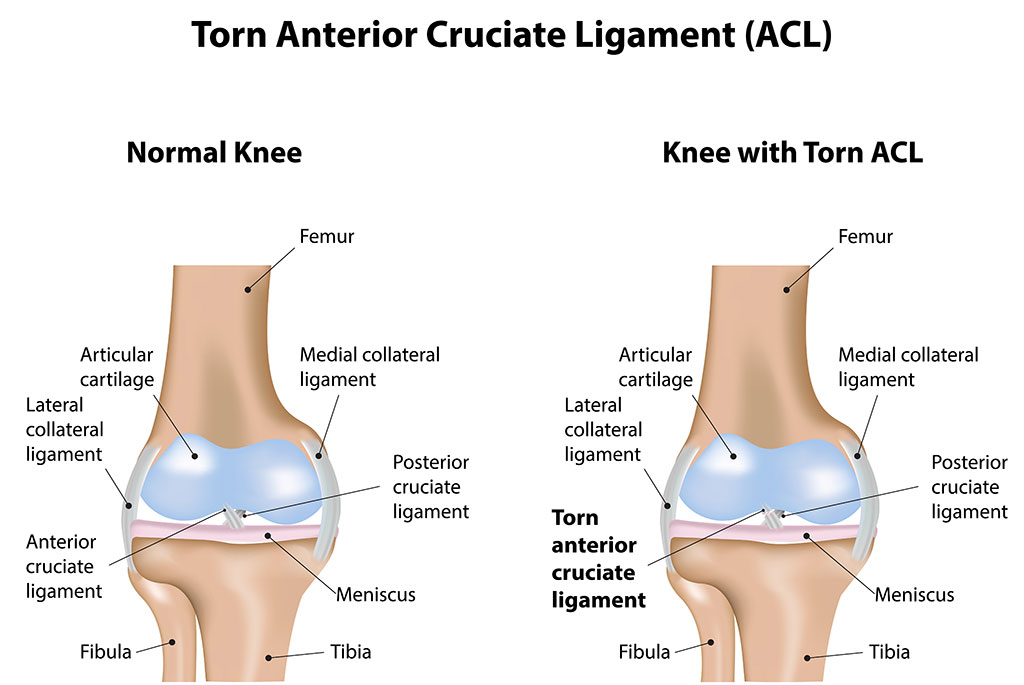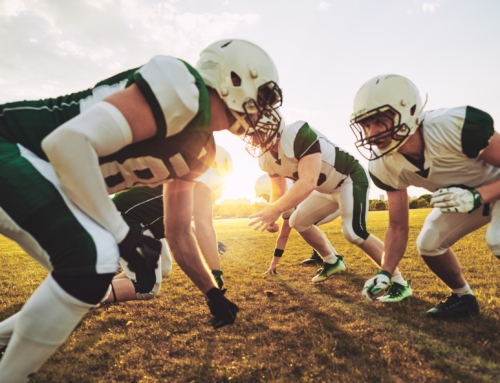We often hear about professional athletes tearing or straining their knee or “blowing out their knee.” During those sideline or post-game reports, we often hear the announcer use three letters to describe the knee injury. This leaves most of us knowing the athlete hurt their knee and they will be out for a long while.
Anterior Cruciate Ligament tear (ACL tear) has become a buzz phrase in the past couple of years. This is especially true with injuries to stars like the NFL’s Adrian Peterson and Robert Griffin III as well as NBA stars like Derek Rose. Adrian Peterson was tore his ACL and MCL (that ligament is a different topic for a different day) on Christmas Eve in 2011. We will focus on the Anterior Cruciate Ligament (ACL) today.
The ACL is the most important knee ligament in the knee and provides knee stability in multiple directions. When the ACL is injured, the knee can become wobbly or unstable and even buckle during simple movements.
Quick cuts or changes in direction while running or having stresses added to the knee (think about someone falling into your knee) while the leg is planted on the ground are often causes of ACL tears. These are activities which often occur during athletic activities like basketball, football, soccer and skiing.
Just after an ACL tear, the injured person feels pain and may be unable to put weight on the injured leg. The knee swells and feels very unstable. An ACL tear can be found with on the field tests administered by an athletic trainer, physical therapist, or medical doctor, but the diagnosis of an ACL tear is not truly finalized until an MRI scan confirms the tear.
Treatment for the ACL tear is usually surgery to rebuild the damaged ligament. Following surgery, physical therapy is ordered and can last from just a couple of months but may last up to 6 months or longer for a high level athlete. The total rehab time can vary, but most return to sport after a time usually around 9 months but up to a full year. Non-athletes sometimes opt not to have surgery but are unable to run or perform any sort of dynamic activities. If not treated, a knee with an ACL tear may be subject to further damage to other structures in the knee and may even cause early arthritis in the knee.
During the first installment about ACL tears, our message was about prevention. Please read that blog post for some good information about preventing this dreadful injury.
If you have an ACL tear, please go see your doctor and make sure you include physical therapy as part of your recovery. If you are in the San Antonio area and want to get back the life you deserve, and back to the activities you love, we can help. Call us at (210) 888-1278 or visit a Momentum Physical Therapy & Sports Rehab near you to see how we can help!






